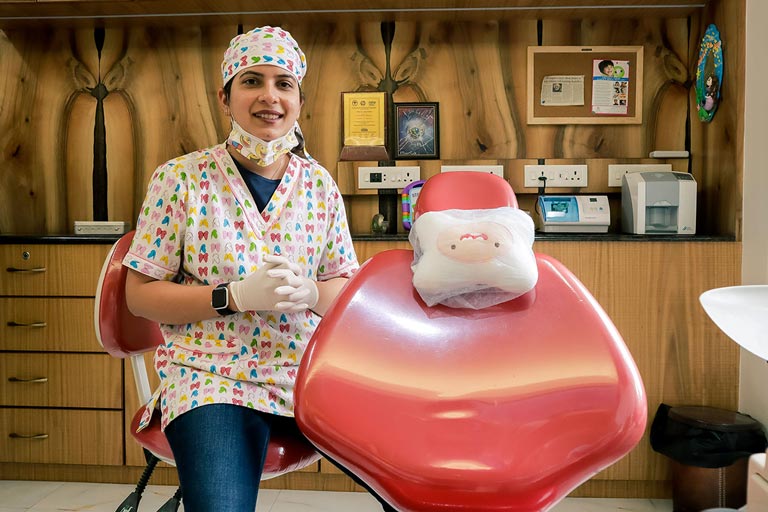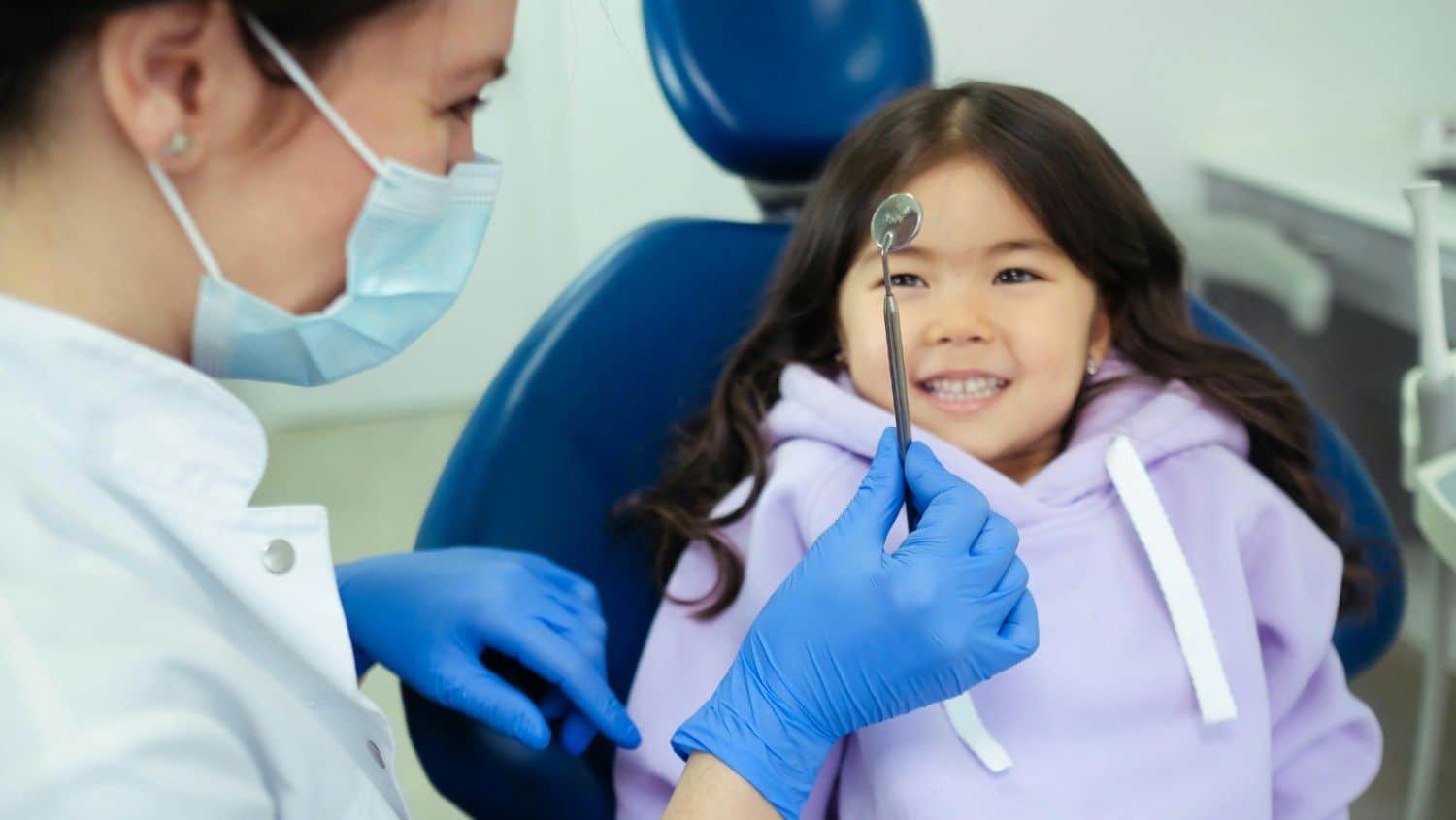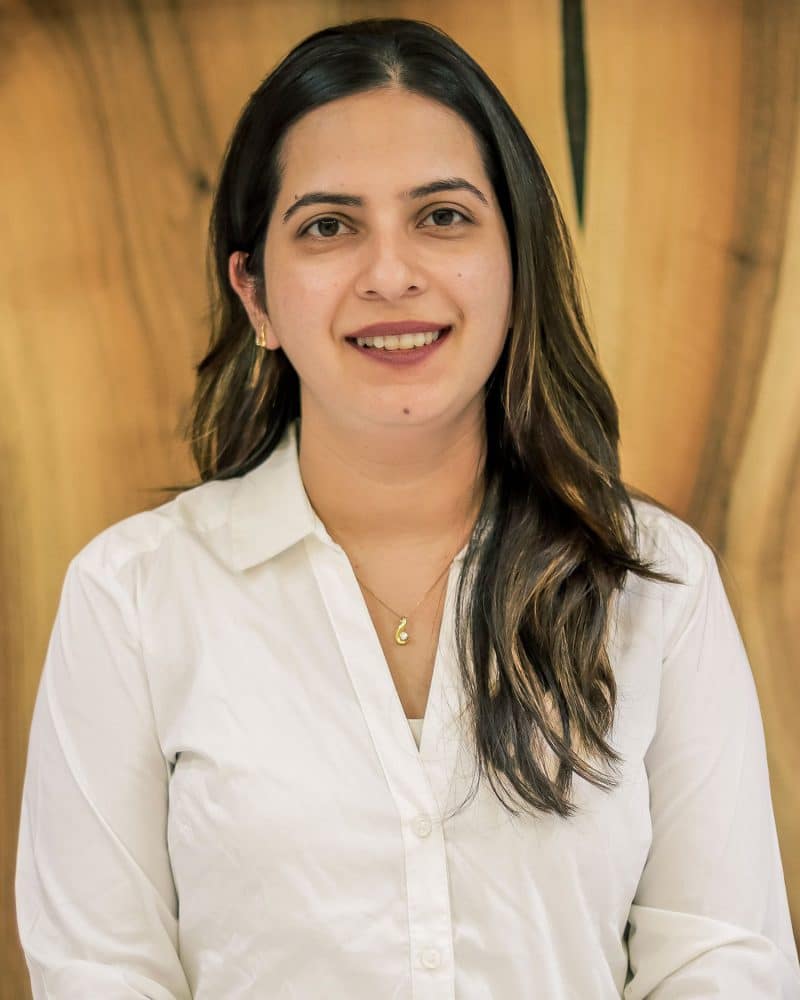Imagine this: your child has a cavity, but instead of drills and tears, the dentist simply paints on a liquid, and that’s it. No needles, no whirring sounds, no numbing required. It’s over before your child even realizes.
This gentle little innovation is Silver Diamine Fluoride (SDF), and it’s quietly changing how cavities in children are managed, especially for parents in Pune looking for painless cavity treatment for children. If you’ve never heard of the silver bullet or SDF, you’re not alone. But it’s time parents started paying attention because it might just spare your child a lot of discomfort down the road.
What exactly is SDF?
Silver Diamine Fluoride is a clear liquid that dentists apply directly to small cavities. Unlike traditional treatments that involve removing decayed tooth structure with a drill and then filling it, SDF stops the cavity in its tracks without any drilling at all.
It does this with the help of two of its powerful ingredients:
- Silver, which kills the bacteria causing the decay.
- Fluoride helps to harden the weakened tooth and keep it strong.
This means the cavity is essentially “frozen,” preventing it from growing. The tooth becomes more resistant to further decay, buying precious time, sometimes years before any filling is ever needed.
Why is this such a breakthrough for kids' dentistry?
Pediatric dentists in Pune and worldwide have long faced the same challenge: how to fix cavities in young or nervous kids without turning the dental chair into a battlefield.
SDF offers a way out.
Here’s why parents are getting excited about it:
- It’s quick and painless.
There’s no drill, no injections, and no anxiety-inducing sounds. The solution is simply brushed on. - Perfect for very young and fearful children.
Kids who might not sit still for traditional fillings can still have their cavities managed. - Helps kids with special needs.
Children who find it tough to cooperate can avoid or delay more invasive treatments. - Cost-effective.
Often, it’s less expensive than fillings, which is helpful if there are multiple cavities.
And importantly, SDF is opening the door for more non-invasive or minimally invasive cavity treatment options that keep dental visits positive and stress-free.
Does SDF actually stop cavities?
That’s the big question parents usually have. The answer: yes, in many cases, quite effectively.
Research shows that over 80% of cavities treated with SDF stop progressing. But as per our ideology, it essentially buys time, sometimes until the child is older and more cooperative to handle the dental treatment better.
However, it does have one very visible trade-off, though: SDF turns the decayed area dark black. This is actually a good sign that the cavity has been arrested. Still, parents should know ahead of time. Considering that, it makes SDF a great option to use on back teeth, where it’s less noticeable, but parents still have concerns regarding the front teeth. If the need arises, make sure to discuss cosmetic options later on with us.
Is SDF safe for children’s teeth?
Absolutely. Silver Diamine Fluoride has been used internationally for decades and is recognized by leading dental associations as safe and effective. It’s especially helpful in managing early childhood caries, which is one of the most common chronic diseases in kids.
The key is proper diagnosis; not all cavities can be treated with SDF. A Pediatric dentist will check if the cavity is still small enough and not causing pain or infection before taking it up for SDF Application.
Understanding consent for SDF treatment
Because Silver Diamine Fluoride works differently from traditional fillings and does leave the decayed area black to indicate that the cavity has been halted, most pediatric dentists use a simple consent form. This ensures parents fully understand:
- How SDF works and why it’s recommended
- What the benefits and limitations are, including that it does not restore tooth shape or color
- What kind of follow-up may be needed later on, and is there a need for a definite treatment at a later date?
If you’d like to see what a typical SDF consent form looks like, you can view a sample here:
View a standard SDF consent form
This helps you get a sense of the kind of points your dentist will cover with you before applying SDF to your child’s teeth.
How long does it last?
Generally, it may need to be reapplied every 6 to 12 months to keep working. Regular follow-ups allow the dentist to monitor the tooth and decide if another application or a different treatment is needed.
Alternatives: SDF vs traditional fillings
It’s not an either-or situation. Think of SDF as a powerful tool in the toolbox, especially for early or small cavities, wiggly toddlers, or kids who are too young for fillings.
Traditional fillings are still the go-to when decay is advanced, painful, or when the tooth’s shape needs to be rebuilt for chewing.
Some parents also ask about newer materials or laser dentistry. While those have their place, SDF remains unmatched in being truly non-invasive and gentle.
Why does this matter to you as a parent
Cavities in baby teeth aren’t something to ignore. Untreated decay can lead to pain, infections, and even impact the health of adult teeth. The beauty of SDF is that it offers a simple, low-stress way to manage small cavities early, preventing them from turning into bigger problems.
If your child tends to be anxious about dental visits, or you simply want to avoid needles and drilling whenever possible, SDF might be a conversation worth having with your dentist.
Consider a Kinder Approach to Cavities
The takeaway
Pediatric dentistry is evolving, with more emphasis on preserving tooth structure, reducing trauma, and keeping kids comfortable. Silver Diamine Fluoride is at the forefront of this shift. It doesn’t replace good brushing and fluoride toothpaste, but it’s a remarkable backup when small cavities start to form.
Next time you’re at the dentist, ask about SDF. It might just save your child from a filling and save you both a lot of worry.
Virtual Video Consultations
100% SAFE AND SECURE CALLS WITH ENCRYPTION. YOUR PRIVACY AND CONFIDENTIALITY IS GUARANTEED.
Start here, by making an appointment for a virtual consultation with our expert Dr. Pratibha Kukreja Pandit (NEW PATIENTS ONLY).
Dr. Pratibha Kukreja Pandit is available for Virtual Video Consultations from Monday – Saturday between the hours of 11 am – 2pm and 4pm – 7pm.
If you are already our valued patient with questions or have an emergency please contact the clinic on +91 9822053446
Consult Dr. Pratibha Kukreja Pandit
(Pediatric Dentist)

Virtual Video Consultation Fees Rs. 500
The Consultation Fees Must Be Paid Online by GOOGLE PAY BEFORE YOUR APPOINTMENT. See The Instructions On Appointment Confirmations
Your virtual video consultation includes:
- Discussion of problems that your child is facing like tooth pain, swelling or any other emergencies
- Dr. Pratibha will recommend a course of treatment or medications for your child.
Meet the Doctor
Pediatric and Preventive Dentistry Specialist
Dr. Pratibha is the Chief Dentist at Pandit Clinic. She is also a Consultant Pediatric Dentist at Kotbagi Hospital and KEM Hospital, Pune.
Dr. Pratibha has trained at the prestigious Chang Gung Memorial Hospital, Taiwan, in advanced areas including Pediatric dental treatment under General Anesthesia and Intravenous sedation, Dental Rehabilitation of children with special health care needs, and Nasoalveolar molding and dental rehabilitation of cleft lip and cleft palate.
She’s the lifetime member of Student Clinician Association, American Dental Association (SCADA), USA.
Professional Affiliations and Skills
- Trained in Pediatric dental treatment under General Anesthesia and Intravenous sedation at Chang Gung Memorial Hospital, Taiwan
- Trained in Dental Rehabilitation of children with special health care needs at CGMH, Taiwan
- Trained in Nasoalveolar molding and dental rehabilitation of Cleft lip and Cleft Palate at craniofacial centre, CGMH, Taiwan
- Awarded Lifetime membership, SCADA (Student Clinician Association, American Dental Association), USA.
You Might Be Interested In

How Is General Anesthesia Used In Pediatric Dentistry?
Much of Pediatric dentistry involves treating dental problems in children and young adults. It’s a field of dentistry that includes diagnosis, prevention, and treatment for

7 Common Toothbrushing Myths Busted!
Toothbrushing is a vital element for good dental care. It prevents many oral problems such as cavities and tooth infections. Getting a kid to brush









